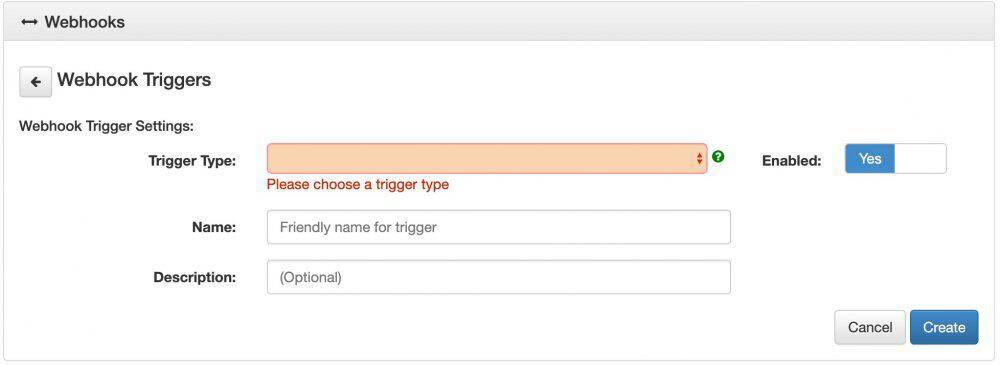Within Webhook Triggers, a “trigger” is basically a certain type of event that you want Apptoto to monitor and potentially react to. Currently, the types of supported webhook triggers are as follows:
- Appointment created
- Appointment modified
- Appointment deleted
- Participant reminder state changed (any state)
- Participant invite sent
- Participant confirmed
- Participant not coming
- Participant needs to reschedule
- Participant booking state changed (any state)
- Participant accepted booking
- Participant declined booking
- Participant canceled booking
- Participant check-in state changed (any state)
- Participant replied to message
- Participant added to stop list
- Booking request completed
- Booking page viewed
- Message sent
- Message received
- Message failed *
To setup a webhook trigger, navigate to the “Settings”>“Integrations” tab and click on the “Webhooks” header. This will display the table of any triggers you currently have set up, with options to edit and delete existing triggers, or create a new trigger:
* The “Message failed” webhook can fire if a message fails to be sent immediately, or if later Apptoto determines that the message was not delivered. So it’s possible you might receive a “Message Sent” webhook, and then later receive a “Message Failed” webhook for the same message.

To setup a new trigger, click the blue “Add” button. You should be greeted with the following form:

The “Trigger Type” field is the type of event that you want Apptoto to monitor, for example, “Participant confirmed” will fire when a participant confirms an appointment. This form also allows you to modify the name and description of the trigger, as well as toggle it on and off so that you can disable it if you need to.
When creating a new trigger, saving the trigger will direct you to a page that allows you to edit the trigger, or add webhook actions that execute when a trigger fires.